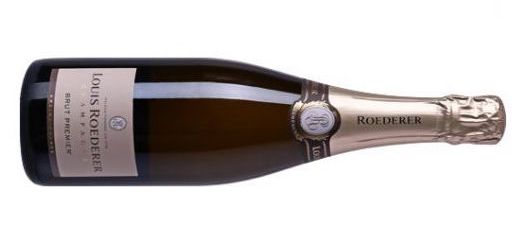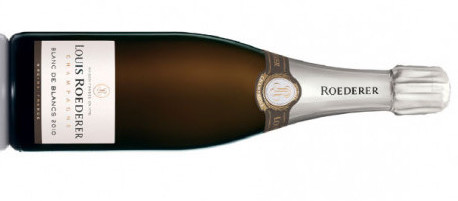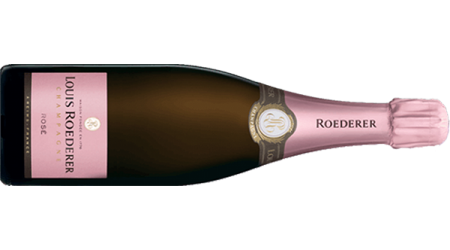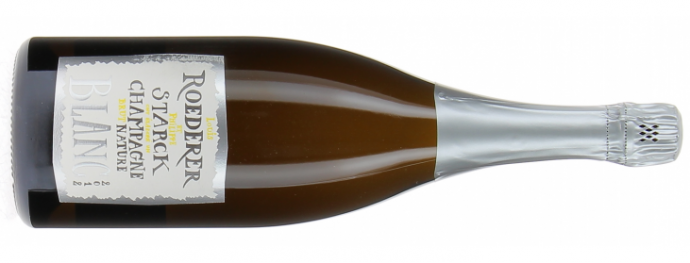Today, we'd like to introduce you to one of our partner areas: the House of Champagne Louis Roederer. Where does this great House come from? What is Cristal de Roederer? We'll answer all your questions in this article! Following in the footsteps of Dubois et fils, whose small house was founded in 1760, Roederer took over the reins in 1833. With the new appellation, however, it became one of the best-known names in Champagne, thanks in particular to its extraordinary prestige cuvée christened "Cristal". Find out more about this great Champagne! The complete Louis Roederer Guide. Read our other articles about the estates:
History of the domain :
In 1776, Dubois father and son founded a house in Reims, which they later sold to Nicolas Schreider. In 1833, he bequeathed it to his nephew Louis Roederer, who gave it its current name. Today, the house is still owned by his descendants. The family owns several wine estates in Bordeaux: Château Haut-Beauséjour, Château de Pez, Château Bernadotte and Château Pichon Longueville Comtesse de Lalande. Domaine Ott in Provence, Maison Delas in the Rhône Valley, Ramos-Pinto port and, since 1993, Deutz champagne. Roederer has a vineyard of 214 hectares, including 80 hectares in the Côte des Blancs. The wines do not undergo malolactic fermentation, except in difficult years. Reserve" wines are kept in oak barrels. All the house's vintages are only produced in good years. Unlike his colleagues, Roederer bought vineyards at a time when grape prices were very low. According to Frédéric Rouzaud, current boss and seventh generation at the helm, "I think he had the vision to make the best Champagne possible, and the best way to do that is to own his own vineyards in grand cru sites". One of his ancestors' first purchases, 15 hectares in Verzenay, is recognized today as one of Champagne's finest pinot noir sites. Rouzaud added 25 hectares that now favor Roederer's 240-hectare estate, which stretches from the south-facing slopes of the Marne valley, in Mareuil, Aÿ and other villages, to the best Chardonnay parcels of the Côte des Blancs, not forgetting the Montagne de Reims, the heart of Pinot Noir. Each year, 3,000,000 bottles are produced, and the House's harvests account for 70% of its needs and cover all its production in terms of vintages. More than two-thirds of the vineyards are classified as Grands Crus. In 1930, in the time of Rouzaud's great-grandmother Camille Orly-Roederer, growers were desperate to sell. Today, however, selling is more difficult, with the price of grapes fetching up to €6 per kg, and two rows of grand cru vines fetching staggering sums. Opponents with less extensive vineyards claim that the secret of great champagne lies more in the cellar and blending than in the land, but this suggests that they are rightly envious of Roederer's magnificent estate. In the second half of the 19th century, it was the Russians and the British who bought the most champagne. Veuve cliquot and its emissary Louis Bohne were certainly pioneers, but other Houses like Roederer were also interested in this market. In 1870, the House was commissioned to produce an exclusive cuvée for Alexander 2, Tsar of Russia. The Cristal presented to the Tsar in 1876 was made with juice from the best and oldest vineyards, and its flavor was undoubtedly masked by the amount of sugar added at the time of dosage: around 106 g/l.
Champagne style
Roederer champagnes are full-bodied and harmonious, with a strong Pinot character, except for the Blanc de Blancs. They are elegant, complex and long-lasting. The success of cuvée Cristal It's an injustice that the other vintages are masked, as they are also of great quality. Here is an overview of these vintages. The whole range of Louis Roederer Champagne is available at the best price on Comptoir des Millésimes! The bottles of Louis Roederer are in stock and ready to ship. But before you taste, here's all information about Roederer champagnes :
The cuvées of the Maison Roederer :
-
Cristal Roederer vintage :
- Origin Le Cristal owes its name to the Baccarat crystalIn the past, the bottle was wrapped in linen, but today it's wrapped in U-V cellophane. In the past, it was wrapped in linen, but today it's wrapped in U-V cellophane. Its bottom was not hollow or pitted, but flat, to make it impossible to conceal a pomegranate. The first prestige cuvée in history, it was created for Tsar Alexander 2 in the 1870s, exclusively for the Imperial Court of Russia. It was subsequently reissued in 1924 for a wider clientele.
- Tasting Aromas of light honey, crisp green orchard fruit, white peach, custard and dried white flowers introduce Cristal , a full-bodied, concentrated and powerful wine made for the cellar. Broad, textured and muscular, it is incisive and strikingly chalky. Cristal is produced from organically grown fruit (since 2012), and launches the opening of a new chapter for Louis Roederer.
- Grape varieties and winemaking The blend is composed of 60 % pinot noir and 40 % chardonnay. It is vinified without malolactic fermentation and disgorged with a dosage of 7.5 grams per liter. Chef de Caves Jean-Baptiste Lecaillon has once again set the bar very high. It ages 6 years in the cellar and rests 8 months after disgorging. It stands out for its balance and purity, with an unrivalled length on the palate. Its careful texture reveals fruit aromas asserted by a mineral power from which notes of white fruit and citrus take flight.
- Guard : This is a champagne for laying down that can be kept for over 20 years without losing its freshness and character.
- Anecdote After the tsars in Russia, Cristal enters the lives of other famous personalities such as Jay-z. But frustrated by Rouzaud's remark, the rap star dropped his favorite champagne in favor of Armand de Brignac's Ace of Spades, a House he had bought, distinguished by its golden bottles. But demand for Cristal continues unabated: today, virtually all the grapes used to make Roederer are organic, with a "modest" dosage of 9 g/L, enabling the House to fulfill its promise to, in Rouzand's words, "extract the magic of grand cru".
-
Roederer Brut Premier :
- Origin The upheavals of the early 1990s and the First World War, which destroyed more than half of Louis Roederer's estate, led Leon Orly Roederer to cut down his vineyard. He buys the grapes to keep the house going in this time of crisis, creating a vintage wine that expresses a consistent taste regardless of the year of harvest. The result was Louis Roederer Brut Premier.
- Grape varieties and winemaking This is a blend of 40% Pinot Noir, 40 % Chardonnay and 20% Pinot Meunier. Brut Premier brings together wines vinified in oak foudres from the three Champagne grape varieties from different crus chosen by Louis Roederer. Maturation lasts 3 years in cellars, with a minimum 6-month rest period after disgorgement.
- Tasting It is balanced between youth and maturity, between seduction and character, freshness and vinosity. It is both full-bodied and structured, elegant and energetic, with a unique vibrancy. It is based on a majority vintage (75%) and supplemented by 25% of reserve wines. The latest version of NV Brut Premier de Laurent Roederer The wine reveals aromas of crisp yellow orchard fruit, Anjou pear, white peach, custard and subtle notes of freshly baked bread. Medium-bodied, homogeneous and complete, with a delicate mousse, ripe but racy acids and exquisite balance. The older it gets, the better it gets. It's one of the best examples in its category and comes highly recommended.
-
Vintage Blancs de Blancs :
- Origin In 1830, Maison Louis Roederer developed a deep understanding of terroirs, practiced separate vinifications and mastered effervescence. In the heart of the Côte des Blancs, where Chardonnay thrives on limestone soils, Louis Roederer selects two exceptional grands crus, Le Mesnil-sur-Oger and Avize, whose type and complementarity help produce intense wines expressing finesse and aromatic richness.
- Grape varieties and winemaking The blend is composed of 100 % of Chardonnay. It is aged for an average of 5 years on lees, and rested for a minimum of 6 months after disgorgement to perfect its maturity.
- Tasting On the palate, the attack is typical of Chardonnay, smooth and slender. This is complemented by floral, slightly honeyed notes of white fruit and dried fruit, integrated with the almost chalky minerality of the Côte des Blancs. Its texture is reminiscent of sugarplums, a sensation reinforced by a soft, enveloping effervescence. It also evokes notes of fresh mint and basil.
-
Louis Roederer Rosé Millésimé:
- Origin The wine is made from grapes that have reached a good level of ripeness, which is often difficult to achieve in the Champagne climate. That's why Louis decided to invest in Cumières, where the shallow clay-limestone soils benefit from a south-facing exposure and the Marne river's abundant sunlight, helping the grapes to reach a high level of ripeness.
- Grape varieties and winemaking The blend is made up of 65% of Pinot Noir and 35% of Chardonnay, with 20% vinified in wood. It is aged for an average of 4 years on lees, and benefits from a minimum 6-month rest period after disgorgement to perfect its maturity.
- Tasting This cuvée releases fruity aromas of wild red berries, followed by floral, zesty, sweet and spicy notes, while nuances of dried fruit and cocoa recall oak ageing. Rich and fleshy, Rosé unleashes the ripeness of the fruit. Thanks to its shimmering effervescence and initial impression of freshness, it opens with almost exotic notes, blended with the pure minerality of Chardonnays.
-
Brut Nature Edition Starck Blanc Millésimé :
- Origin It's a cuvée without artifice, the result of an exchange, shaped by a long-standing friendship. It's the result of a meeting between Maison Roederer and designer Philippe Starck. In warm years, some of the cold clays of the Cumières plots, enveloped by the heat of summer, let their particular resonance and freshness speak for themselves, always producing singular champagnes. This champagne recounts the contours of a pioneering vision of wine012 is a sunny, intense, generous year that forged the grapes into a remarkable resonance with a new, much more generous and intense vibration. This year has thus revealed itself by offering a Brut Nature Blanc. It's a very refined vision of the same territory, which is both contrasting and complementary.
- Grape varieties and winemaking The blend comprises 55% of Pinot Noir, 25% of Pinot Meunier and 20% of Chardonnay, of which 15% was vinified in wood. The harvest came exclusively from the Coteaux de Cumières, classified as a Premier Cru. It has been aged in bottle and on lees for 5 years, and also benefits from a minimum 6-month rest period after disgorgement.
- Tasting The color is gold with a hint of amber. The first bouquet is fairly intense, combining sweet flowers such as honeysuckle with a touch of jasmine, yellow fruit blossoms (peach) and lightly toasted dried fruit with a hint of madeleine perfume. The second bouquet brings out spicy, lemony notes reminiscent of Far Eastern sansho-ko pepper. The palate is full-bodied, with a creamy texture and a final touch of beautiful bitters and spices zested with citrus fruits such as Menton lemon or Florida grapefruit, with a light touch of woodiness.
We hope you have enjoyed this article, and you can find our other articles on our other partner estates. Discover also the range of Champagne Louis Roederer in stock and at the best price on Comptoir des Millésimes.















